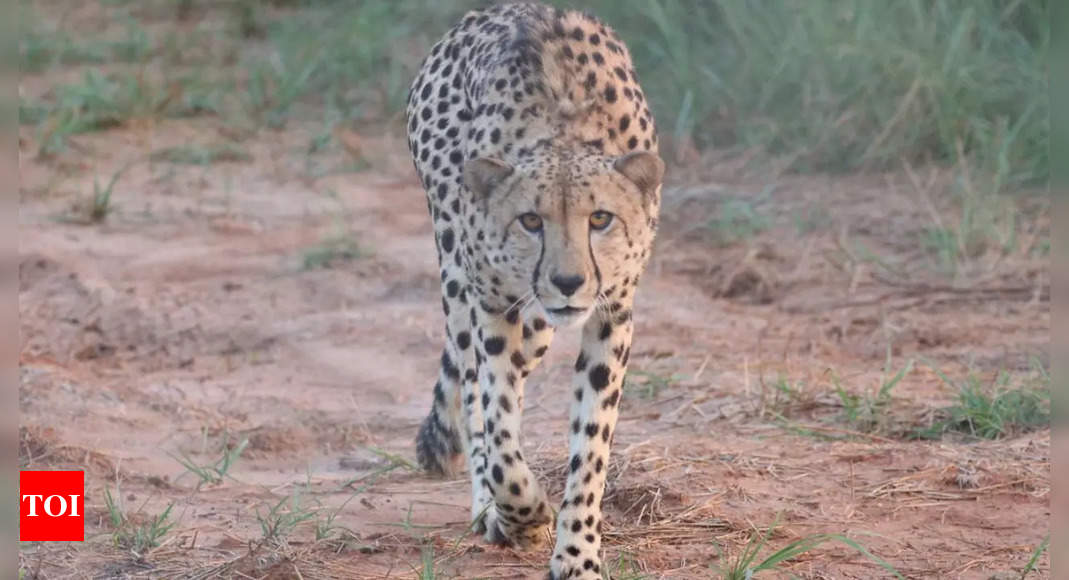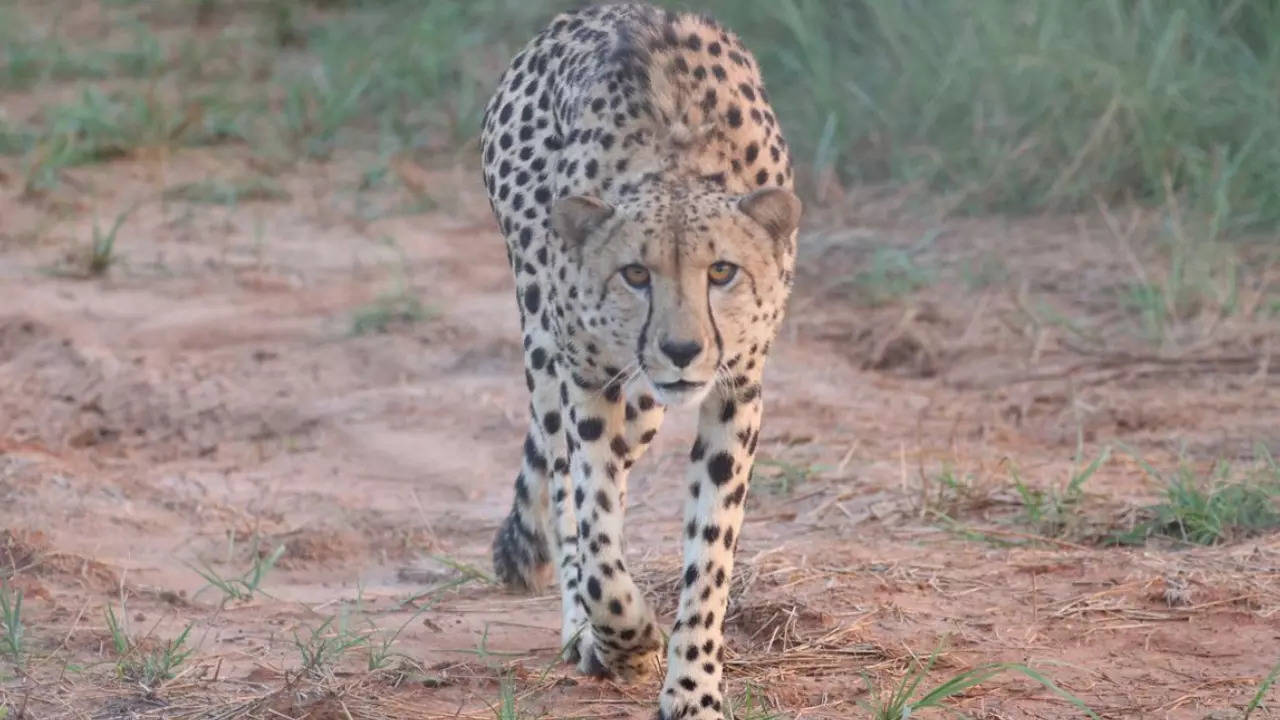[ad_1]
BHOPAL: The Ministry of Environment, Forest and Climate Change (MoEFCC) has responded to the recent deaths of cheetahs within Madhya Pradesh’s Kuno National Park. In an official statement, the ministry clarified that out of the 20 adult cheetahs that were translocated, five mortalities were due to natural causes, contrary to media reports suggesting otherwise. The ministry dismissed such reports as speculative and lacking scientific evidence.
Efforts are underway to investigate the cause of the cheetah deaths, including consultations with international cheetah experts and veterinary doctors from South Africa and Namibia. Independent national experts are also reviewing existing monitoring protocols, protection measures, managerial inputs, veterinary facilities, and training and capacity-building aspects. The Cheetah Project Steering Committee is closely monitoring the project’s implementation and has expressed satisfaction with the progress so far.
Several steps have been planned to support the cheetah conservation project, including the establishment of a Cheetah Research Center with facilities for rescue, rehabilitation, capacity building, and interpretation. Additional forest areas will be brought under the administrative control of Kuno National Park for landscape-level management. Moreover, more frontline staff will be deployed, a Cheetah Protection Force will be established, and a second home for cheetahs will be created in the Gandhi Sagar Wildlife Sanctuary in Madhya Pradesh.
To ensure effective management, the Government of India has deployed a dedicated team from the National Tiger Conservation Authority (NTCA) to work closely with field officials. This team analyzes real-time field data collected by monitoring teams to make informed decisions on various management aspects, including health and interventions required for better conservation efforts.
The ministry emphasized that the Project Cheetah is a long-term undertaking and its success or failure cannot be determined prematurely. In the last 10 months, stakeholders involved in the project have gained valuable insights into cheetah management, monitoring, and protection. The ministry remains optimistic about the project’s long-term success and advises against speculative conclusions at this stage.
The ambitious Project Cheetah, aimed at reintroducing cheetahs to India, is being implemented by the NTCA in collaboration with the Madhya Pradesh Forest Department, the Wildlife Institute of India (WII), and cheetah experts from Namibia and South Africa. The project follows the “Action plan for Introduction in India,” and a Steering Committee comprising experts and officials involved in the successful tiger reintroduction in Sariska and Panna Tiger Reserve has been formed to oversee the project.
As part of the project, a total of 20 radio-collared cheetahs were translocated from Namibia and South Africa to Kuno National Park. After the mandatory quarantine period, the cheetahs were shifted to larger acclimatization enclosures. Currently, 11 cheetahs are under free-ranging conditions, while five, including a cub born in India, remain in quarantine enclosures. A dedicated monitoring team is closely observing each of the free-ranging cheetahs round the clock, says the release.
It is important to note that cheetahs have been reintroduced to India after a gap of seven decades, and such a project is expected to face challenges and fluctuations. Global experiences, particularly in South Africa, indicate that during the initial phase of cheetah reintroduction, mortality rates of over 50% among introduced cheetahs are not uncommon. These deaths can result from various factors, including intraspecific fights, diseases, accidents before and after release, hunting-related injuries, poaching, road accidents, poisoning, and predation by other predators. To address these eventualities, the action plan includes provisions for annual supplementation of the initial founder population to manage the demographic and genetic composition of the reintroduced population.
Efforts are underway to investigate the cause of the cheetah deaths, including consultations with international cheetah experts and veterinary doctors from South Africa and Namibia. Independent national experts are also reviewing existing monitoring protocols, protection measures, managerial inputs, veterinary facilities, and training and capacity-building aspects. The Cheetah Project Steering Committee is closely monitoring the project’s implementation and has expressed satisfaction with the progress so far.
Several steps have been planned to support the cheetah conservation project, including the establishment of a Cheetah Research Center with facilities for rescue, rehabilitation, capacity building, and interpretation. Additional forest areas will be brought under the administrative control of Kuno National Park for landscape-level management. Moreover, more frontline staff will be deployed, a Cheetah Protection Force will be established, and a second home for cheetahs will be created in the Gandhi Sagar Wildlife Sanctuary in Madhya Pradesh.
To ensure effective management, the Government of India has deployed a dedicated team from the National Tiger Conservation Authority (NTCA) to work closely with field officials. This team analyzes real-time field data collected by monitoring teams to make informed decisions on various management aspects, including health and interventions required for better conservation efforts.
The ministry emphasized that the Project Cheetah is a long-term undertaking and its success or failure cannot be determined prematurely. In the last 10 months, stakeholders involved in the project have gained valuable insights into cheetah management, monitoring, and protection. The ministry remains optimistic about the project’s long-term success and advises against speculative conclusions at this stage.
The ambitious Project Cheetah, aimed at reintroducing cheetahs to India, is being implemented by the NTCA in collaboration with the Madhya Pradesh Forest Department, the Wildlife Institute of India (WII), and cheetah experts from Namibia and South Africa. The project follows the “Action plan for Introduction in India,” and a Steering Committee comprising experts and officials involved in the successful tiger reintroduction in Sariska and Panna Tiger Reserve has been formed to oversee the project.
As part of the project, a total of 20 radio-collared cheetahs were translocated from Namibia and South Africa to Kuno National Park. After the mandatory quarantine period, the cheetahs were shifted to larger acclimatization enclosures. Currently, 11 cheetahs are under free-ranging conditions, while five, including a cub born in India, remain in quarantine enclosures. A dedicated monitoring team is closely observing each of the free-ranging cheetahs round the clock, says the release.
It is important to note that cheetahs have been reintroduced to India after a gap of seven decades, and such a project is expected to face challenges and fluctuations. Global experiences, particularly in South Africa, indicate that during the initial phase of cheetah reintroduction, mortality rates of over 50% among introduced cheetahs are not uncommon. These deaths can result from various factors, including intraspecific fights, diseases, accidents before and after release, hunting-related injuries, poaching, road accidents, poisoning, and predation by other predators. To address these eventualities, the action plan includes provisions for annual supplementation of the initial founder population to manage the demographic and genetic composition of the reintroduced population.
[ad_2]
Source link











More Stories
We can’t wait to face India in the final: Pat Cummins | Cricket News
Railways plans 3,000 additional trains in next 4-5 years to minimise number of waitlisted tickets | India News
Faridabad: Man dies after ‘falling from hotel room window’ while partying with friends